20 Types of Wind Instruments You Didn’t Know Existed
Did you know that there are 20 different types of wind instruments? Most people are only familiar with the common ones, such as the trumpet and the saxophone. However, there are many other types that can be just as fun to play!
In this blog post, we will discuss each type of wind instrument and provide pictures and videos so you can see them in action. We will also give you a brief description of each one. Are you ready to learn about some new instruments? Let’s get started!
1. Bagpipes.
What are bagpipes?
Bagpipes are a wind instrument with a set of pipes and a bag. The pipes are played by blowing into the mouthpiece, while the bag is squeezed to provide air.
Bagpipes have been around for centuries, and their origins can be traced back to ancient times. Bagpipes are commonly associated with Scotland, but they are also popular in other parts of the world, such as Ireland, Wales, and Brittany.
There are many different types of bagpipes, each with its own unique sound. The most common type of bagpipe is the Great Highland Bagpipe, which is used in traditional Scottish music. Other popular types of bagpipes include the Irish uilleann pipes, the Welsh pibgorn, and the Breton biniou.
Bagpipes are not only used for traditional music; they can also be played for other genres, such as jazz and rock. In fact, many famous musicians have incorporated bagpipes into their songs, such as The Beatles, Led Zeppelin, and Pink Floyd.
Is bagpipes hard to play?
No, bagpipes are actually quite easy to play. The hardest part is probably learning how to make the right sounds with your mouth and breath. But once you get the hang of it, it’s really not that difficult. Just like any other musical instrument, practice makes perfect.
Why did the English ban the bagpipes?
The English banned the bagpipes for a number of reasons. Firstly, they were considered to be a symbol of Scottish culture and nationalism.
Secondly, they were thought to be an instrument of war, used to intimidate English soldiers. Finally, the sound of the bagpipes was said to be ‘unnatural’ and ‘uncivilised’.
The ban was enforced in a number of ways. In some cases, bagpipers were arrested and their instruments were destroyed. In other cases, people were simply discouraged from playing the instrument, through taxation or other means.
2. Bassoon.
What is Bassoon?
The bassoon is a woodwind instrument that produces a deep, rich sound. It is typically made of maple or rosewood, and has a curved shape that resembles a snake.
The bassoon is one of the most popular instruments in orchestras and bands, and is often used in movie scores to create a suspenseful or dramatic effect.
The bassoon is a challenging instrument to learn, but once you get the hang of it, you’ll be able to create beautiful music that will add depth and richness to any ensemble.
History of bassoon.
The bassoon is a woodwind instrument that has been around for centuries. It is believed to have originated in Italy, and the first recorded mention of the bassoon was in a 14th-century Italian work.
The bassoon was originally used as a military instrument, but it soon found its way into orchestras and other musical ensembles. The bassoon has a distinctive sound that is both mellow and powerful, and it is often used to add depth and richness to the music.
The bassoon is a versatile instrument that can be used in a wide variety of musical genres, from classical to jazz. It is also a popular choice for solo performances, as its unique sound can really help to set a piece of music apart.
What is the bassoon known for?
The bassoon is a versatile instrument, capable of playing both solo and ensemble roles. It is known for its distinctive tone, which has been described as “mellow and woody.”
The bassoon is also known for its wide range, which extends from the deep lows of the contrabassoon to the high highs of the piccolo bassoon. The bassoon is a member of the woodwind family, and is closely related to the oboe and the English horn.
The bassoon is a notoriously difficult instrument to learn how to play, due in part to its large size and awkward shape. The bassoon is also known for its many quirks, such as the fact that it is one of the few instruments that is played with a double reed.
Despite its challenges, the bassoon is a beloved instrument by many musicians. Its unique sound has been featured in countless pieces of classical and popular music, and it continues to be an important part of orchestras and ensembles around the world.
Why is the bassoon called the clown of the orchestra?
There are many theories out there, but the most likely explanation is that it’s because of the bassoon’s comical appearance. With its long body and bulbous bell, the bassoon looks more like a joke than a serious musical instrument.
But looks can be deceiving. The bassoon is actually a very versatile and powerful instrument, capable of playing both solo and ensemble roles. In the right hands, the bassoon can be a true force to be reckoned with.
3. Clarinet.
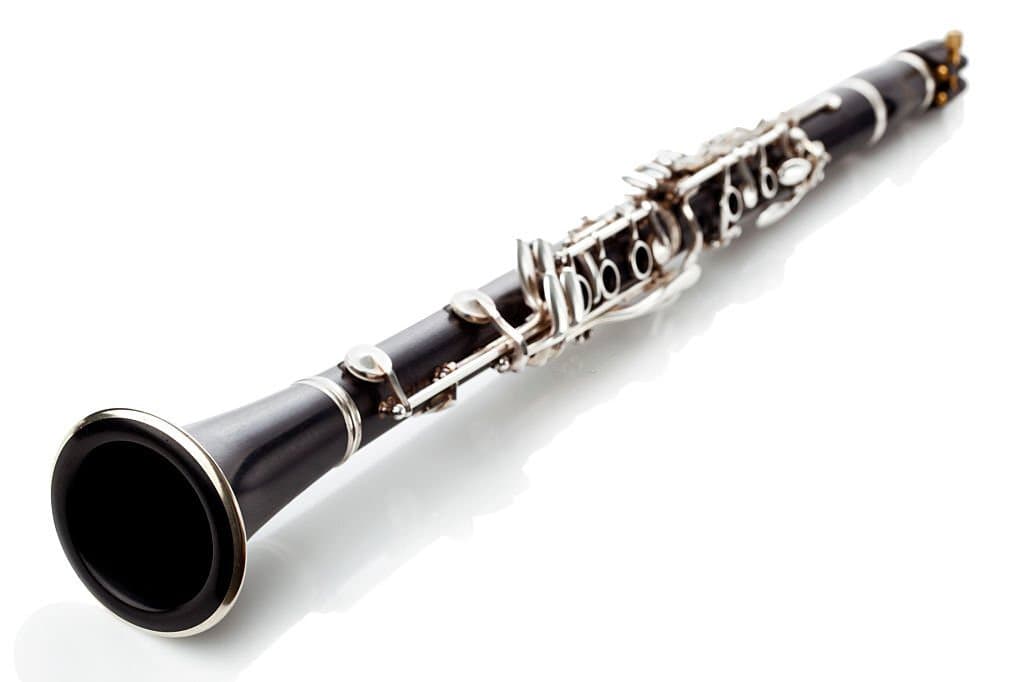
What is a clarinet?
The clarinet is a musical instrument of the woodwind family. The clarinet is a single reed instrument with a cylindrical bore. It is the largest and lowest-pitched member of the woodwind family. The clarinet has a distinctive timbre that is easily recognized.
The clarinet was invented in the early 18th century by a German musician named Johann Christoph Denner. The clarinet was originally called the basset horn, but it was later renamed the clarinet.
The first clarinets were made of wood, but later instruments were made of metal and plastic. Clarinets are now manufactured all over the world.
The word clarinet comes from the Italian word clarino, which means “clear.”
The clarinet is used in a variety of musical genres, including classical, jazz, and folk music. Clarinets are also used in military bands and orchestras.
There are many different types of clarinets, including the soprano clarinet, alto clarinet, bass clarinet, and contrabass clarinet. Each type of clarinet has a different range of notes that it can play.
Clarinets are played by blowing into the mouthpiece and using the fingers to open and close the holes in the instrument. By opening and closing the holes, the player can change the pitch of the clarinet.
Clarinets are tuned to a scale called just intonation. This means that each note is tuned to a specific frequency. The clarinet is a transposing instrument, which means that the music is written in a different key than the one in which it is played.
The clarinet is a popular instrument for beginners because it is relatively easy to learn how to play. However, the clarinet can be challenging to master. Clarinetists must practice regularly to develop their skills.
4. Contrabassoon.
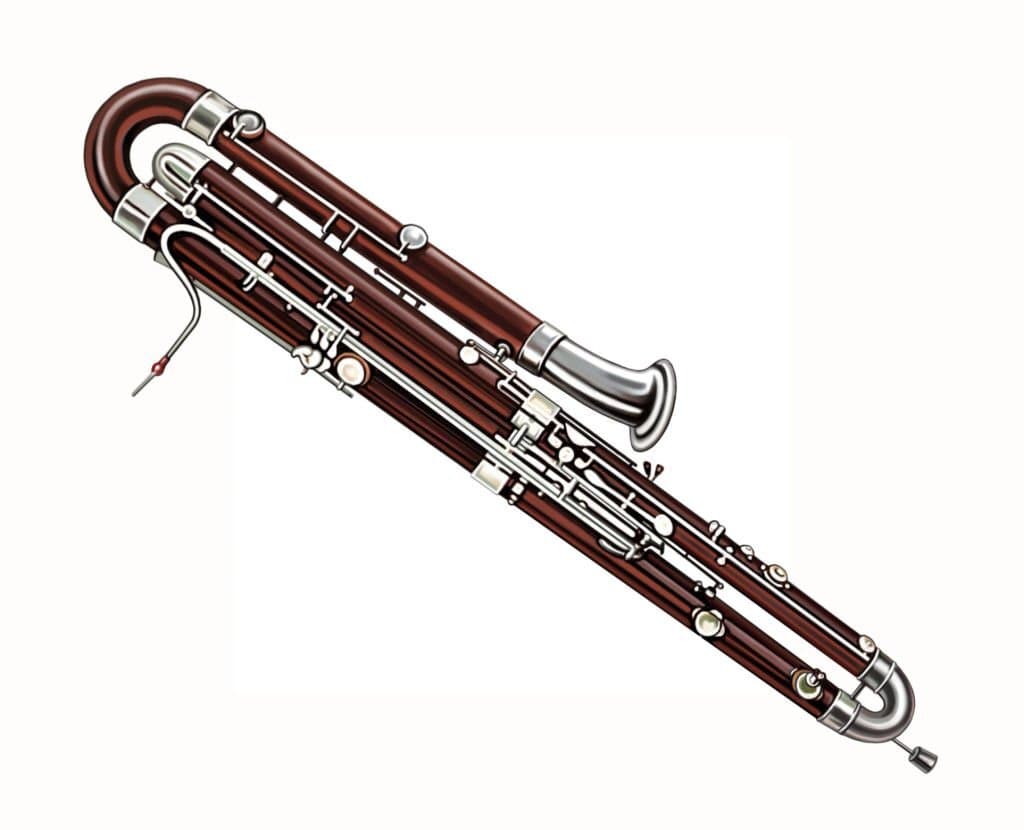
What is Contrabassoon?
The contrabassoon, also known as the double bassoon or simply the bassoon, is a low-pitched woodwind instrument in the same family as the oboe and English horn. The contrabassoon is about twice the size of a regular bassoon and has a range of two octaves lower than its smaller sibling.
Despite its large size, the contrabassoon is actually a very agile instrument, capable of playing fast passages with ease. The contrabassoon is most often used to add depth and richness to the lower end of the orchestra, but it can also be featured as a solo instrument.
What is the difference between a bassoon and a contrabassoon?
The contrabassoon, also known as the double bassoon, is a larger version of the bassoon. It has a longer tube and a lower pitch. The range of the contrabassoon extends to two octaves below that of the bassoon.
The contrabassoon is most often used in symphony orchestras, where it provides the bass line. It can also be used in chamber music and solo repertoire.
The sound of the contrabassoon is deep and rich, making it an ideal choice for creating a sense of atmosphere in music.
What is contrabassoon made of?
The contrabassoon is a large bassoon, usually with a bore of at least 18 mm (0.71 in). It has a wider bore than the ordinary bassoon, and is thus capable of producing lower notes.
The lowest note on a standard contrabassoon is B♭0; however, some modern instruments have a range extending down to A♭0. The contrabassoon is normally twice as long as the bassoon, which gives it a much lower pitch. It is also called the double bassoon, or simply the bassoon.
The contrabassoon is an orchestral instrument, and thus its parts are written in treble clef. The instrument has a wide range of dynamics, from pp to ff. The contrabassoon is capable of playing at very loud volumes (up to 110 decibels) and can be used to create powerful bass lines.
The contrabassoon is made of wood, usually maple. The body of the instrument is conical, and the bore is cylindrical. The bell of the instrument is flared, and the instrument has a number of tone holes. The contrabassoon also has a reed, which vibrates to create the sound.
5. Cornet.
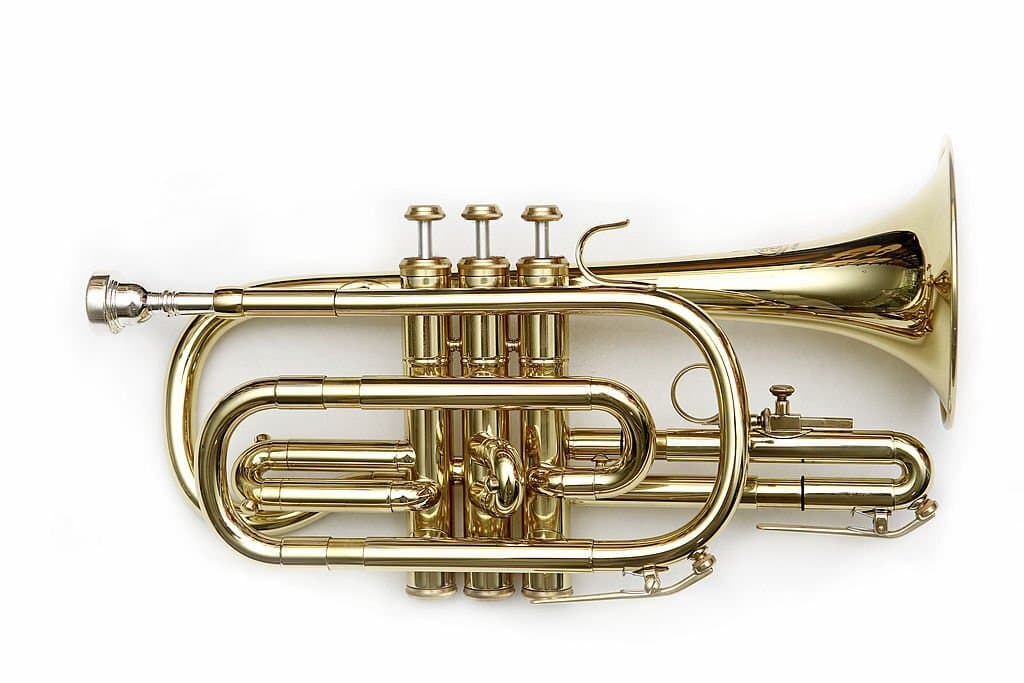
What is Cornet?
Cornet is a brass musical instrument with a conical bore and a flared bell. The modern cornet is derived from the post horn, a natural horn used by postilions on horseback to signal the arrival of a mail coach.
It was developed in England in the early 17th century and soon became popular as an orchestral instrument.
The cornet was initially used as a military band instrument, but it soon became popular in brass bands and orchestras. It is now used in a wide range of musical genres, including jazz, pop, and classical music. Cornets are also used in marching bands and fanfares.
The word “cornet” comes from the French word “cornette,” which means “little horn.” The name was first used in the early 17th century, and it eventually became the standard term for the instrument.
The cornet is a versatile instrument that can be used in a wide range of musical styles. It has a bright, piercing sound that can cut through an orchestra. It is also capable of playing delicate, lyrical passages.
The cornet is a relatively easy instrument to learn, and it is a popular choice for beginners. Cornets are available in a variety of sizes and styles, so there is sure to be one that is perfect for you.
6. Dulcian.
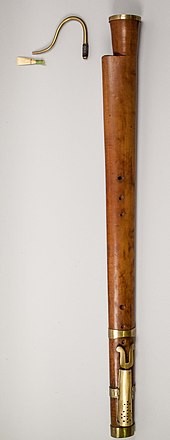
What is Dulcian?
Dulcian is a type of musical instrument. It is a brass instrument that is similar to the trumpet. The dulcian was used in the Renaissance period and was popular in Europe.
The dulcian is also known as the curtal, bassoon, or fagotto. It is a woodwind instrument that is made of wood or metal. The dulcian has a conical bore and a single-reed mouthpiece.
The dulcian is a versatile instrument that can be used for solo or ensemble playing. It is often used in orchestras, chamber music, and as a solo instrument.
The dulcian is a beautiful instrument that has a rich history. It is an important part of music history and continues to be enjoyed by musicians today.
What does the dulcian sound like?
The dulcian is a Renaissance woodwind instrument that was very popular during the 16th and 17th centuries. It is similar to the modern bassoon, but has a much softer and sweeter sound. The dulcian was often used in chamber music and as a solo instrument.
The dulcian is played using a double reed, which is made from two pieces of cane. The player blows into the reed, which vibrates and creates sound. The dulcian has a range of about three octaves.
The dulcian was developed in the 15th century from an earlier instrument called the bombardon. It was first used in Italy, but soon spread to other countries in Europe. The dulcian became particularly popular in Germany and England.
Today, the dulcian is not as common as it once was. However, there are still a few professional players who perform on this beautiful instrument. If you ever have a chance to hear a dulcian being played, you will be sure to enjoy its sweet sound.
7. English horn.
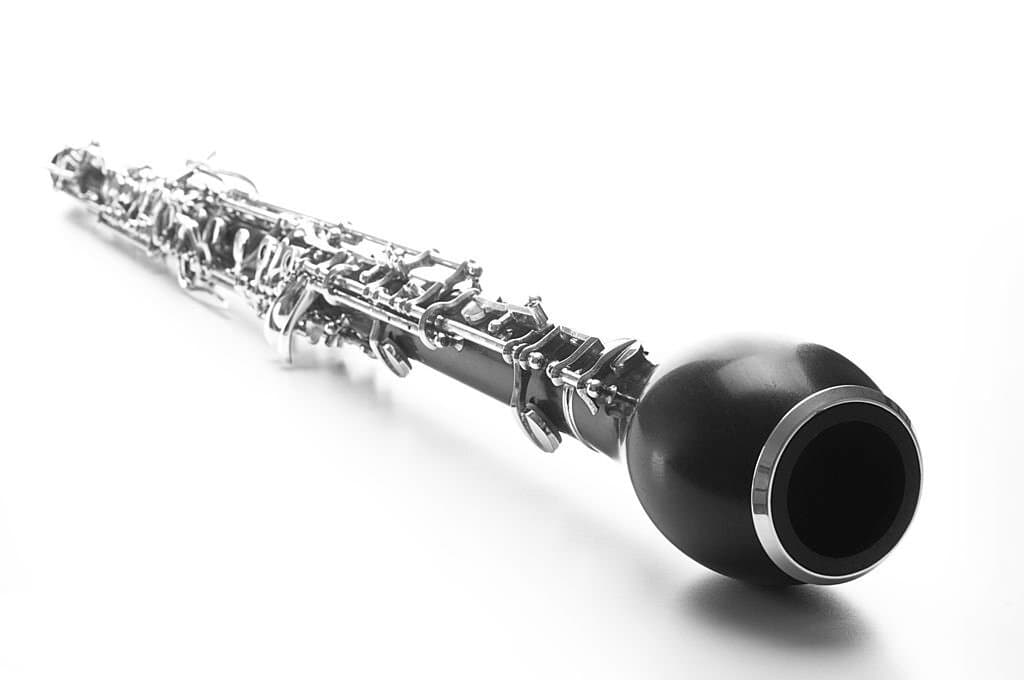
What is the English horn?
The English horn is a double-reed woodwind instrument that is a member of the oboe family. It is about half the size of a full-size oboe and has a lower, more mellow tone. It is used in orchestras, concert bands, and chamber music ensembles.
The English horn is also known as the cor anglais, French for “English horn”. It is a transposing instrument, meaning that it is written in a different key than it sounds. When used in an orchestra, it is usually written in F or E♭.
The English horn is a double-reed instrument that uses two pieces of reed to vibrate and produce sound. The reeds are held in place by a metal ligature, which is tightened or loosened to adjust the tension of the reeds.
The English horn is played with a single-reed mouthpiece, similar to that of the oboe. The player’s left hand holds the instrument while the right hand operates the keys.
The English horn has a range of about two and a half octaves, from the B♭ below middle C to the G above high C.
8. Euphonium.
What is Euphonium?
Euphonium is a musical instrument of the brass family. The euphonium is part of the tuba family, which includes the tuba, baritone, and trombone. The word “euphonium” comes from the Greek word “euphonia,” which means “sweet voice.”
The euphonium is a valved instrument, meaning that it has valves that the player presses to change the pitch of the note. The euphonium is a conical brass instrument, meaning that its bore (the inside diameter of the tubing) gradually increases in size from the mouthpiece to the bell.
The euphonium is a tenor-voiced instrument, meaning that it has a range of notes that are lower than those of the trumpet and higher than those of the trombone. The euphonium is often used in symphonic bands and orchestras, as well as in jazz ensembles.
The euphonium is a great instrument for beginners because it is easy to learn how to play. The valves are easy to press, and the notes are easy to produce.
The euphonium is also a great instrument for advanced players because of its versatility. Euphonium players can create a wide range of sounds, from soft and mellow tones to loud and powerful ones.
9. Flute.
What is a flute?
Flute is a musical instrument that belongs to the woodwind family. The flute is played by blowing air into a hole in the instrument and using your fingers to cover or uncover other holes.
The earliest flutes date back to about 43,000 years ago and were made from bird bones! Can you believe it? These days, flutes are made from all sorts of materials, including wood, metal, and plastic.
There are all sorts of different flutes out there, ranging from the piccolo (which is the smallest member of the flute family) to the bass flute (which is the largest).
Is learning flute difficult?
This is a question that I get asked a lot, and it’s tough to answer because it really depends on the person. For some, picking up a flute and producing a beautiful sound can come relatively easily. Others may find themselves struggling for months or even years before they feel confident with their playing. So I guess the best answer to the question is: it depends.
There are a few things that can make learning flute more difficult, such as not having access to a good teacher, or trying to learn from a book instead of from a person. If you’re serious about learning flute, I would highly recommend finding a good instructor who can help you every step of the way.
What are the benefits of playing flute?
The flute is a very versatile instrument that can be used in many different genres of music. It has a wide range of notes that it can play, which makes it perfect for both solo and ensemble performances. Additionally, the flute is a very portable instrument, which means that it can be taken with you wherever you go.
10. Flutophone
What is Flutophone?
Flutophone is a type of flute that is commonly used in elementary school music programs. It is smaller than a regular flute and has fewer keys, making it easier for young children to play.
The flutophone produces a high-pitched, tinny sound that some people find annoying. However, many parents and teachers believe that the flutophone is an excellent instrument for teaching young children the basics of music.
Who invented the Flutophone?
The Flutophone was invented in 1930 by George J. Bontempo. It is a small, plastic wind instrument that is similar in appearance to a flute. The Flutophone is played by blowing into the mouthpiece and depressing the keys with the fingers.
The Flutophone has been used in many different settings, including classrooms, marching bands, and orchestras. It is a popular instrument for beginning musicians because it is very easy to play. Many people who have never played a musical instrument before can learn to play the Flutophone in just a few minutes.
The Flutophone is also popular because it is very affordable. A good quality Flutophone can be purchased for less than $20. This makes it a great option for people who are on a budget.
11. French horn.
What is a French horn?
A French horn is a musical instrument in the brass family. It is used in symphony orchestras, concert bands, and as a solo instrument. The French horn has a distinctive shape: it is coiled with a large bell at the end.
The French horn was developed in the early eighteenth century by two German instrument makers, Johann Heinrich Schulze and Johann Sebastian Bach. The French horn was originally called the German horn, but it was later renamed the French horn to reflect its popularity in France.
The French horn is a challenging instrument to play, but it can be extremely rewarding. If you are thinking about learning to play the French horn, I encourage you to do so. It is a beautiful instrument that will bring you years of enjoyment.
12. Harmonica.
What is a harmonica?
A harmonica is a musical instrument that is played by blowing air into it or drawing air out of it. The harmonica consists of a series of tuned reeds, which are enclosed in a case. The player blows into the harmonica, and the reeds vibrate to produce sound.
There are many different types of harmonicas, and each type has a different range of notes that it can play. The most common type of harmonica is the diatonic harmonica, which has a range of seven notes. Chromatic harmonicas and tremolo harmonicas are also common.
Harmonicas are used in many genres of music, including blues, country, folk, and rock. They are particularly popular in blues and jazz music.
The harmonica is a relatively easy instrument to learn to play, and it is very portable, making it a good choice for musicians who travel frequently.
Related: 10 Easy Harmonica Songs For Beginners With Tabs
13. Oboe.
What is Oboe?
Oboe is a woodwind instrument that belongs to the double-reed family. It is one of the oldest instruments in the world, with its origins dating back to ancient Egypt.
Oboe is typically made of wood, although some modern oboes are made of synthetic materials. The oboe has a conical bore and uses a double reed to produce sound. It is a member of the orchestra and is often used in chamber music and solo performances.
The oboe has a distinct, mellow tone that is both powerful and expressive. It is capable of a wide range of dynamics, from soft and delicate to loud and forceful. The oboe is considered one of the most challenging instruments to learn, but it is also one of the most rewarding.
Is oboe harder than clarinet?
This is a question that I hear often, and unfortunately, there is no easy answer. Both instruments have their own unique challenges. For example, the oboe requires a lot of breath control and embouchure strength, while the clarinet demands precise fingerings and good tone quality.
14. Piccolo.
What is Piccolo?
Piccolo is a musical instrument in the flute family. The piccolo has the highest pitch of all the instruments in the orchestra. It is used to play high melodies and provide bright, shrill sounds.
The word “piccolo” means “small” in Italian, and this name was given to the instrument because it is smaller than the standard flute. The piccolo is about half the size of a regular flute and has a higher pitch.
The piccolo is played with the same fingerings as the flute, but because it is smaller, it produces a higher pitch. To play the piccolo, you blow into the mouthpiece and cover the holes with your fingers to create different notes.
The piccolo is a very popular instrument, and many beginner flute students start out playing the piccolo. If you’re interested in learning how to play the piccolo, there are many resources available online and in music stores. With a little practice, you’ll be playing piccolo like a pro in no time!
15. Recorder.
What is a recorder?
A recorder is a musical instrument in the woodwind family. It is usually played with two hands, and has a mouthpiece with a single reed. The recorder is one of the oldest musical instruments, and was very popular in the Renaissance period.
There are many different types of recorders, but they all have similar parts. The body of the recorder is a cylindrical tube with finger holes. The mouthpiece is inserted into one end of the tube, and the other end is open. There is a small hole in the middle of the recorder called the windway.
The sound of the recorder is produced by blowing air into the mouthpiece. This vibrates the air inside the recorder, and the sound resonates through the finger holes. The pitch of the recorder can be changed by covering or uncovering different combinations of finger holes.
Recorders are made from a variety of materials, but most are made from wood. Some common woods used for recorders are maple, pear, and rosewood. Recorders can also be made from plastic, metal, or glass.
Recorders come in a wide range of sizes, from sopranino to great bass. The size of the recorder affects the pitch of the instrument. Larger recorders have a lower pitch, while smaller recorders have a higher pitch.
16. Saxophone
What is a saxophone?
The saxophone is a conical-bored transposing musical instrument that is a member of the woodwind family. Saxophones are usually made of brass and played with a single-reed mouthpiece similar to that of the clarinet.
The saxophone was invented by Adolphe Sax in 1846. He wanted to create an instrument that would be the most powerful and expressive member of the woodwind family.
The saxophone is considered to be one of the most versatile instruments in existence. It can be used in a wide variety of genres, including jazz, rock, blues, soul, R&B, gospel, Latin, and classical music. Saxophones come in a variety of sizes, each with its own range and tonal quality.
The most common saxophones are the alto saxophone, tenor saxophone, baritone saxophone, and soprano saxophone. Alto and tenor saxophones are the most popular types of saxophones. Baritone and soprano saxophones are less common, but they are gaining in popularity.
Saxophones are generally made of brass, but they can also be made of other materials, such as wood or plastic. The type of material used affects the instrument’s sound. For example, brass saxophones have a brighter sound than woodwind instruments.
17. Shawn.
What is shawn?
Shawn is a type of wind instrument that is commonly used in folk music. It consists of a wooden or metal tube that is played with the mouth. The shawn has a distinctive sound that is often described as being similar to the sound of a bagpipe.
The shawn is believed to have originated in Europe, and it is thought to be one of the oldest types of wind instruments. It was traditionally used for outdoor music, and it was often played at funerals and other ceremonies.
Today, the shawn is still widely used in folk music, and it is also popular in contemporary pop and rock music. It is a versatile instrument that can be used for a variety of genres.
18. Trombone
What is trombone?
The trombone is a brass instrument that uses a slide to change the length of the tubing and produce different pitches. It is one of the few wind instruments that can play all notes in the chromatic scale, making it a very versatile instrument.
The trombone has been around for centuries, with its origins dating back to the Renaissance period. It is most commonly used in jazz, symphonic, and marching bands.
19. Trumpet
What is a trumpet?
A trumpet is a brass instrument that produces sound by vibrating the player’s lips against the mouthpiece. The player’s lips buzz when they blow air into the instrument, and this causes the trumpet to make a sound. Trumpets are used in all kinds of music, from classical to jazz to rock and roll.
There are many different types of trumpets, but they all have the same basic design. The most common type of trumpet is the B-flat trumpet, which is the kind most often used in orchestras. Other types of trumpets include the C trumpet, D trumpet, E-flat trumpet, and F trumpet.
Trumpets come in different sizes, too. The most common size is the standard B-flat trumpet, but there are also piccolo trumpets, which are smaller and have a higher pitch, and bass trumpets, which are larger and have a lower pitch.
Why is the trumpet so famous?
The trumpet is one of the most popular and famous wind instruments. It has a long history and has been used in many different types of music.
The trumpet is known for its powerful sound and its ability to project over long distances. It is also one of the most versatile instruments, able to play a wide range of notes and styles.
20. Tuba
What is a tuba?
The tuba is the largest and lowest-pitched brass instrument. It has a wide, conical bore and produces a deep, mellow sound. The tuba is most often used in symphony orchestras, concert bands, and brass bands.
What are the different types of tubas?
There are several different types of tubas, including the orchestral tuba, marching tuba, and bass tuba. The most common type of tuba is the orchestral tuba, which is used in symphony orchestras and concert bands.
The marching tuba is a smaller, more portable version of the instrument that is often used in marching bands. The bass tuba is the largest and deepest-sounding type of tuba. It is often used in brass bands and as a solo instrument.
Conclusion
Wind instruments come in all shapes and sizes, from the humble recorder to the mighty tuba. Each has its own unique sound, and there is an instrument to suit every taste. Whether you are a beginner or a seasoned professional, there is a wind instrument out there for you. So why not give one a try today?









